The state of marketing measurement today
Two words dominate the C-suite’s current marketing agenda: GenAI and Measurement. While generative AI is reshaping how content is created and campaigns are executed, measurement is what determines whether those investments actually drive business impact.
According to McKinsey’s 2024 CMO survey, only 41% of marketing leaders consider their organisations mature in performance measurement. More than 70% admit they cannot dynamically adjust marketing spending based on effectiveness. This maturity gap means CMOs often face the unenviable task of defending their budgets with limited evidence of ROI.
Challenges include:
- Balancing budgets between performance marketing and brand building
- Adjusting the channel mix dynamically
- Dealing with incomplete or poor-quality data
- Measuring ROI on emerging tactics, from TikTok campaigns to GenAI-augmented content
This situation forces CMOs to address both strategic questions (How do I allocate budgets across geographies, channels, and between short-term and long-term goals?) and operational questions (What’s the best way to scale campaign budgets? Which audiences should be prioritised this week? What creative performs best?).
The decision hierarchy matters: strategic decisions often rely on deeper insights gathered over months, while operational decisions require more granular, high-frequency metrics. Measurement frameworks must serve both needs.
The golden triangle of MROI
At the heart of modern marketing measurement is what the guide calls the golden triangle of marketing ROI (MROI): marketing mix modelling (MMM), incrementality testing, and attribution.

-
Marketing mix modelling (MMM)
MMM is the most strategic of the three. It analyses historical data to quantify the impact of marketing activities on sales, taking into account base demand versus incremental lift. Modern MMMs go further by incorporating brand effects, delayed impact, and diminishing returns.
MMM comes with a budget optimiser and scenario simulator that allow CMOs to reallocate resources and test different future strategies. It has become the critical interface between the CMO and CFO, offering a comprehensive view of where marketing spend delivers value.
-
Incrementality testing
Incrementality testing validates whether marketing activities genuinely drive new outcomes. It works by comparing a test group (exposed to a campaign) against a control group (not exposed). Unlike simple A/B testing, incrementality testing isolates the causal effect of marketing. Key uses include:
- Measuring the true incremental value of campaigns
- Optimising spend allocation
- Calibrating both MMM and attribution models
- Building a culture of “test and learn”
Incrementality testing can be user-based (tracking individuals) or geo-based (comparing regions). Both approaches come with multiple methodologies, from Bayesian causal inference to potential outcomes frameworks, depending on the complexity of the question.
-
Attribution
Attribution addresses one of the marketing’s most common challenges: Who gets credit for a conversion? Traditionally, attribution was either rule-based, such as first click, last click, linear, or time-decay, or data-driven (DDA). Attribution often relied on Markov chains (sophisticated mathematical models that predict future states based on current conditions and ignore past events), or Shapley values (rooted in game theory, they offer a fair method for distributing gains or costs among collaborating actors with unequal contributions.)
In 2025, attribution has advanced further. Deep learning models like LSTMs (Long Short-Term Memory), enhanced with attention mechanisms, can model customer journeys more effectively and assign credit more fairly. These AI-driven approaches allow marketers to understand which combinations of touchpoints lead to conversions, not just which individual channels contributed.
-
Why triangulation matters
Each methodology has strengths and weaknesses. MMM gives the long-term, top-down perspective. Incrementality testing provides ground truth through experimentation. Attribution offers detailed, in-flight optimisation. Used together, they form a holistic view of marketing effectiveness that balances strategic planning with tactical agility.
To in-house or not to in-house?
A major theme in 2025 is whether companies should develop in-house measurement solutions or rely on SaaS providers.
- Pros of in-house: Customization, control, IP retention, long-term cost efficiency, scalability.
- Cons of in-house: High upfront costs, need for specialized talent, maintenance burden, ongoing updates.
The right choice depends on data availability, resources, and strategic priorities. Large mature brands with strong data foundations increasingly build in-house MMM and attribution capabilities, while others may lean on SaaS for speed and expertise.
Business use cases from industry leaders
![]() Google’s open-source Meridian
Google’s open-source Meridian
In early 2025, Google launched Meridian, an open-source Python package for MMM. Meridian addresses three pain points: calibration (aligning with incremental test results), upper-funnel measurement (using reach and frequency instead of impressions), and search bias correction (factoring in query volume as a confounding variable).
The open-source nature of Meridian means companies can tailor it to their needs, making MMM both more accurate and more transparent.
“Google’s goal is to give advertisers the ability to own their MMM process and full transparency in model design.” – Sid Mohan, Director Data Science US & Northern Europe at Artefact.
![]()
Marketing measurement excellence at Accor
Accor, with over 5,700 hotels worldwide, uses incrementality testing to measure the true impact of acquisition channels like paid search, which grow costlier each year. By questioning assumptions about what drives incremental revenue, Accor has optimized its budget allocation and empowered teams to challenge long-held beliefs.
“Incrementality measurement is key to marketing effectiveness, especially with rising privacy concerns and complex customer journeys.” – Yassine Hachem, Senior VP E-commerce & Customer Engagement at Accor.
![]()
Nike: Operationalizing marketing measurement
Nike’s story is one of persistence and cultural change. Senior leadership championed measurement as a strategic enabler, not just a reporting function. Incrementality testing became the standard for proving marketing impact, while MMM provided the backbone for long-term planning. Nike also in-housed its MMM capabilities to tailor insights to its complex business. Key lessons include:
- Consistency builds trust (Nike used the same scorecard every quarter, even when data was incomplete.)
- Measurement must be embedded in business processes (from planning cycles to digital commerce.)
- Culture and people matter as much as tools (Nike invested in data literacy through its Consumer Marketing Academy.)
- Tools should be democratized (dashboards and scorecards made insights widely accessible.)
“The true value of marketing measurement lies in how well it is wired into company processes, supported by strong leadership sponsorship, and embraced through effective change management.” – Linda Cereda, Former Global VP of Marketing Data at Nike.
Artefact: Brand and long-term measurement
Artefact emphasizes the 95-5 rule: only about 5% of consumers are in-market at any given time, meaning 95% are not ready to buy. Performance marketing targets the 5%, but brand building nurtures the 95%.
To capture both effects, Artefact has developed approaches to integrate brand equity into MMM. By linking brand metrics (from surveys, social listening, and search volume) to both short-term sales and long-term baseline growth, marketers can quantify the dual impact of brand strength: it boosts future revenue and improves short-term activation efficiency.
“This richer perspective allows marketers to make more informed investment decisions, balancing brand-building and performance marketing based on the actual impact of media across both time horizons.” – Johan Walda, Data Science Manager at Artefact
The future of marketing measurement
Looking ahead, five major trends clearly emerge:
- Data quality and provenance: Marketers will demand reliable, transparent data sources, particularly in consumer-facing AI applications.
- Evolving media landscape: Connected TV and retail media networks will require new measurement frameworks.
- In-housing MMM with testing: More mature brands will build internal measurement capabilities, combining MMM with continuous experimentation.
- Privacy-first approaches – With stricter regulations and declining third-party cookies, first-party data and aggregated methods (like MMM) will gain importance.
- Focus on attention quality: Measurement will move beyond clicks and impressions to metrics that capture meaningful engagement and attention, driving creative effectiveness.
The overall direction is clear: an integrated, privacy-conscious, and quality-driven measurement ecosystem where methodologies work together and where the balance between short-term performance and long-term brand building is measurable, not guesswork.
Conclusion: Measurement is now a strategic enabler
In 2025, marketing measurement is no longer a back-office analytics function. It is a boardroom issue, shaping budget allocation, strategic planning, and competitive advantage. The golden triangle of MMM, incrementality testing, and attribution forms the core. But the real differentiator lies in how companies integrate these methods, in-house or via partners, and embed them into their culture and processes.
The stories of Accor and Nike show that success requires more than technical sophistication. It takes leadership buy-in, cultural change, consistent application, and democratization of insights.
The key lesson for the C-suite? Measurement isn’t about choosing one methodology or one tool. It’s about orchestrating multiple approaches to capture the full picture of marketing impact. Those who master this orchestration will not only defend their budgets but also unlock sustainable growth.

 BLOG
BLOG






